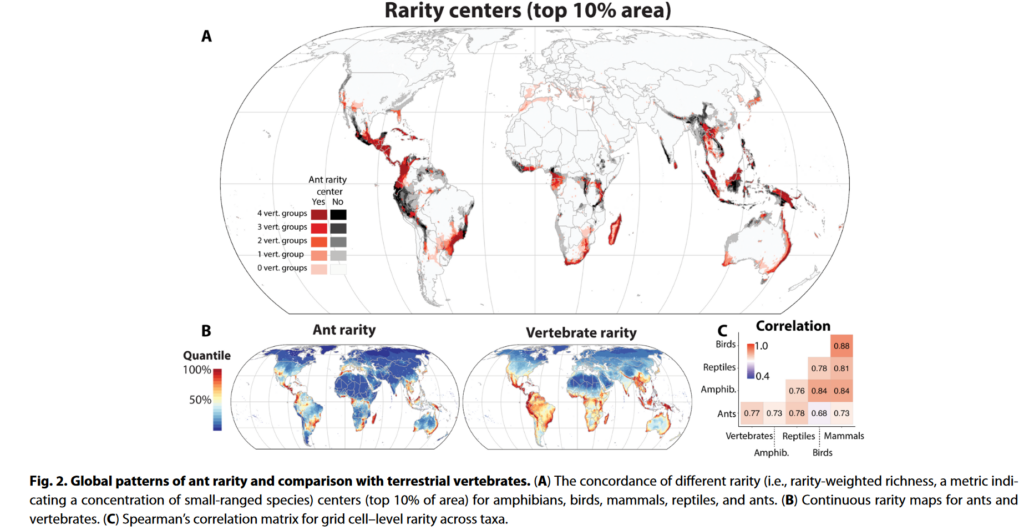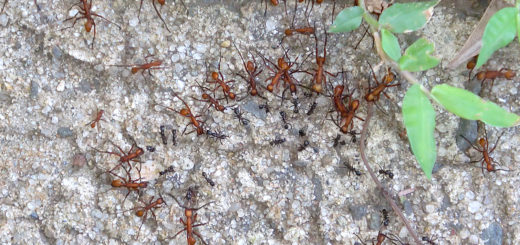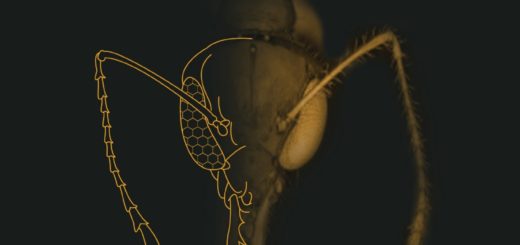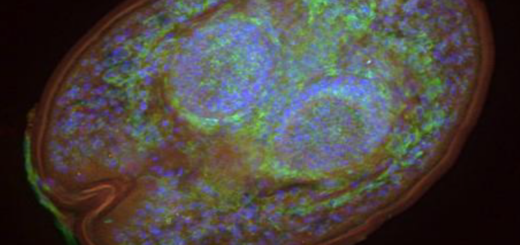The first high-resolution global map of ant biodiversity and estimates of where future sampling could yield undiscovered species

In the recent paper “The global distribution of known and undiscovered ant biodiversity” published in Science Advances, Kass and collaborators* investigate the global biodiversity patterns of ants in the first comprehensive and high-resolution global study for any insect group. They created high-resolution (~20 km) maps of ant richness and rarity and compared them with those of the more well-known terrestrial vertebrates. They found ants and vertebrate groups have unique characteristics in their diversity patterns, highlighting the necessity of broadening the diversity of taxa included when considering conservation efforts. To address sampling biases across the globe, they additionally used machine learning to predict how ant diversity patterns would change if sampling efforts were equally distributed around the world, producing a “treasure map” identifying regions where future sampling is likely to uncover new species. Importantly, according to their high-sampling predictions, 78% of rarity centers would overlap between ants and vertebrate groups, which suggests that broader drivers may influence endemism patterns in a variety of taxa. This indicates that protecting habitats vital to vertebrates may also benefit invertebrates. Here, Jamie M. Kass and Benoit Guénard answer some questions and highlight the main points.
* Jamie M. Kass, Benoit Guénard, L. Dudley, Clinton N. Jenkins, Fumika Azuma, Brian L. Fisher, Catherine L. Parr, Heloise Gibb, John T. Longino, Philip S. Ward, Anne Chao, David Lubertazzi, Michael Weiser, Walter Jetz, Robert Guralnick, Rumsaïs Blatrix, James Des Lauriers, David A. Donoso, Christos Georgiadis, Kiko Gomez, Peter G. Hawkes, Robert A. Johnson, John E. Lattke, Joe A. MacGown William, MackaySimon Robson, Nathan J. Sanders, Robert R. Dunn, and Evan P. Economo
An Interview compiled by Gaurav Agavekar, Patrick Krapf, and James Trager
Featured image by Phil Hönle showing the seed harvesting ant Pogonomyrmex barbatus.

MNB: Could you tell us a bit about yourself?
JMK: First and foremost, I am a biogeographer interested in why species are found where they are, but also how we can make good predictions of where to look for them and how their ranges might change over time. I also spend a lot of time programming and working on ecological software that can help others with modeling workflows. Since beginning my doctoral research at the City University of New York with Prof. Robert P. Anderson in 2013, I have been much more of a specialist in methods than particular taxa. But during my 3 years as a JSPS Postdoctoral Researcher in the Biodiversity and Biocomplexity Unit at the Okinawa Institute of Science and Technology Graduate University (OIST) with Prof. Evan Economo and colleagues, I have become increasingly enamored with ants and entomology in general. I am very happy to have contributed to a better understanding of insect biogeography, as insects are so important yet receive much less attention than other taxa.
BG: As far back as I remember, I always had a passion for nature, and especially for insects. Back in 2002 then an undergraduate student in Montréal, Canada, I had the opportunity to start working on ants and I have not stopped since. My myrmecological adventures led me to work or live in several countries across five continents and experience the diversity of ants (and other life forms), reinforcing my interests in ecology, biogeography and taxonomy. In 2012, I settled down in Asia and have been in Hong Kong since 2014, where I am now an Associate Professor at The University of Hong Kong. Over the past 15 years, I think it’s fair to say that I have spent a lot of time compiling data about ants so we can gain a broader understanding of species distributions, biological invasions, systematics, and ecology. I also have a long-lasting interest in communicating science to the public. In that endeavor, I founded and now direct the Hong Kong Biodiversity Museum, a small museum dedicated to biodiversity.
MNB: Could you briefly outline the research you recently published in layman’s terms?
JMK & BG: While human societies spend billions of dollars on seeking life in outer space, we still have an incomplete understanding of the existence and distribution of most species on Earth. In this study, we provided one of the most comprehensive views on a group of insects: the ants. For the first time, we produced high-resolution global diversity maps at a scale allowing comparisons with existing maps for vertebrates. This was possible thanks to the compilation of ant distribution records from nearly 10,000 publications and more than 80 private and public databases, such as AntWeb, collectively representing nearly 2.5 million records spread all over the world and culminating in the creation of the GABI (Global Ant Biodiversity Informatics) database. As many occurrence records lacked geographic coordinates, we developed a workflow to georeference their coordinates based on their locality descriptions and clean the data of errors and reduce spatial uncertainty. We used this expanded occurrence data to make range estimates for each species using models that varied in complexity based on data availability. Then, we combined these to estimate ant biodiversity for the globe. We made global maps for ants with estimates per 400 sq km grid cell for species richness (number of species) and range rarity (species richness weighted higher for small-ranged species). Species with small ranges have a higher extinction risk and are thus important targets for conservation. Next, as historical sampling biases were likely to affect our results, we used machine learning to predict what our ant biodiversity estimates would look like if sampling were done with equal effort globally. These results allowed us to identify parts of the world where we should probably invest more research effort. Additionally, the comparison with well-known vertebrate groups showed that, interestingly enough, ant and vertebrate diversity patterns across the globe have important similarities (e.g., more diversity in the tropics). But there were some differences too, as we estimated that several regions were more diverse for ants than previously expected based on vertebrate diversity patterns. In conclusion, this study provides a comprehensive occurrence database, range estimates for all known ant species, maps of ant biodiversity for the globe, and estimates for areas harboring hidden ant diversity. Importantly, it also reveals the importance of including a greater representation of life when making estimates of global biodiversity.

MNB: What is the take-home message of your work?
JMK & BG: This work identified several regions where our current knowledge of ant biodiversity is clearly insufficient. We provide a “treasure map” for the current and future generations of ant biologists with the idea that future sampling and taxonomic efforts can target those regions to improve our understanding of the diversity of ants, and probably other insect groups, on this planet. We also estimate that with future sampling, richness patterns for ants will diverge from those for vertebrates, but that rarity patterns will become more congruent. This is a good sign for conservation, as current priorities based on vertebrates may also protect areas important for ant diversity, and perhaps by extension, insect diversity as a whole. Finally, this study shows that despite their high numbers of species, it is possible to map insect diversity on a scale comparable to vertebrate groups; we hope this will encourage other biologists, particularly those working on invertebrates, to adopt similar approaches.
MNB: What was your motivation for this study?
JMK & BG: In recent years, several global diversity and distribution maps have been published for well-known groups like the terrestrial vertebrates (amphibians, birds, mammals, and reptiles) and some plant groups, thanks to the abundant distribution information available for these taxa. Although these groups do not represent a majority of the diversity of life, they are commonly used to help prioritize most conservation actions. In contrast, while insects represent a large share of species diversity, global efforts to map diverse groups of invertebrates have been scant. We thus wanted to use ants, a diverse family of insects (~14,500 species and subspecies in our study) responsible for crucial ecosystem functions and services, to understand their global diversity patterns, identify regions where their diversity is poorly studied, and compare diversity centers for ants and vertebrates. This knowledge gap was our incentive for building GABI and using it to produce new range estimates for all known ant species. We also wanted to demonstrate how scientists can collaborate to generate range and biodiversity estimates for other poorly known invertebrate groups. As we learn more about how diversity is distributed around the globe for different groups, we can craft future conservation policies to protect a greater representation of life.
MNB: What was the biggest obstacle you had to overcome in this project?
JMK & BG: The data collection and collation process was likely our biggest obstacle. Information about ant distributions exists, but it is widely scattered across thousands of publications (~10,000 used) and dozens of databases, the cumulative work of thousands of people over several centuries. Compiling as much information as possible is an endeavor that took over 10 years for literature records alone. Our compilation builds upon data synthesis efforts by many ant biologists (e.g., AntWeb, Antarea), which still continues today. Such work requires not only compiling data but also continuously updating the taxonomy, identifying native and introduced ranges, removing dubious records (whenever possible), and, most notably for this project, converting the data to a workable “fine-scale” resolution. We initially faced huge gaps in occurrence data for ants due to historical biases in sampling and representation. Most data we recovered was from well-sampled regions like parts of Australia, Europe, and North America. We thus included literature published in many different languages, which was very challenging but essential to cover areas of the globe that were underrepresented in English data sources. Another major obstacle was developing workflows to clean and georeference data for over 14,000 species and build models for those with sufficient data, but here we demonstrate how this can be done for other taxa as well.
MNB: Do you have any tips for others interested in doing related research?
JMK & BG: There are always improvements that can be made to species distribution data by adding new records, identifying dubious ones, or improving the resolution, but the bulk of the work for ants is now available. One step that is essential for developing and maintaining a project like this is the continuous updating of taxonomy. The ant community is very fortunate to have such resources that have been developed in the past and are continuously being updated (e.g., Bolton Catalogue & AntCat.org). Any large-scale datasets on species’ distributions, community composition, or functional traits rely on these resources to ensure their data is up-to-date. Compiling data from literature is also essential as many of those records are unique and not available in other publicly available datasets, even within global projects like GBIF, and cover parts of the world that may seem more understudied than they really are. Thus, scanning literature published in many languages (we covered more than 20 languages for GABI) is essential for this kind of global research.
Once the data is compiled, some automated workflow for data processing and modeling is essential for highly diverse groups. We provide examples of ways to do this in our paper. We benefited from the high-performance computing cluster at OIST to run our analyses relatively quickly, but all of these processes can also be run on desktop computers given enough processing time. Instead of relying on range estimate polygons, which are easy to delineate and require less work, we recommend using species distribution models because they provide more reasonable estimates of suitable areas within these shapes. This is especially important for species with large ranges that include mountain ranges and multiple habitat types that should be excluded from range estimates. Moreover, we found a high sampling bias for ant occurrences in many regions of the world, and other insect groups would likely have similar issues. We dealt with this in our paper by accounting for bias in the species distribution models, but also by modeling a scenario where sampling was equally high everywhere in the world—similar projects would also need to acknowledge and deal with sampling bias in some way to recover patterns of diversity closer to the truth. Finally, this project required an interdisciplinary team of people with expertise in geospatial analysis, statistical modeling, conservation, and of course, ant biology and taxonomy. Similar projects would also need to gather teams with varied skill sets.
MNB: Where do you see the future for this particular field of ant research?
JMK & BG: This work opens new opportunities for exploring ant diversity patterns, mechanisms of biodiversity, and their conservation. It also highlights how little we know in some regions, but also in some “well-studied” regions, as only 53% of ant species had 5 or more occurrence records for range modeling. Additionally, thousands more ant species remain to be discovered and described; adding these new species and new records will be essential in the future. To this aim, we hope that many more ant biologists will join us to improve the data and interpretation and continue to resolve the ant map of life. We are working on technical infrastructure to give more direct access to the GABI database, where people can directly add and curate data. Also, as this study provides a roadmap for future exploration, it is clear that a number of uncertainties still remain. As new data become available, testing how robust these predictions were and identifying regions that may have been underestimated will be essential to refine our global understanding and knowledge of ant diversity.





This is one of the most remarkable ant publications. Great work indeed!!!
It should be read together with
Romiguier, J.; Borowiec, M. L.; Weyna, A.; Helleu, Q.; Loire, E.; La Mendola, C.; Rabeling, C.; Fisher, B. L.; Ward, P. S.; Keller, L. 2022. Ant phylogenomics reveals a natural selection hotspot preceding the origin of complex eusociality. Current Biology 32:2942-2947.
and
Patrick Schultheiss, Sabine S. Nooten, Runxi Wang, Mark K. L. Wong, François Brassard and Benoit Guénard. 2022. The abundance, biomass, and distribution of ants on Earth, Proceedings of the National Academy of Sciences, 119, 40, 9 pp.
With these three articles you get a good view of what ants are and how they are distributed around the world…
See https://blog.myrmecologicalnews.org/2023/03/30/ant-abundance-biomass-and-distribution/
See https://blog.myrmecologicalnews.org/2023/04/05/ant-phylogenomics/
And a forth article:
The global spread and invasion capacities of alien ants.
Mark K.L. Wong, Evan P. Economo, Benoit Guénard.
Current Biology.
Volume 33, Issue 3, 6 February 2023, Pages 566-571.
And a fifth:
Gray, K. W., Rabeling, C., 2023 (“2022”), “Global biogeography of ant social parasites: Exploring patterns and mechanisms of an inverse latitudinal diversity gradient.” Journal of Biogeography, vol. 50, no. 2, p. 316-329. (+ 4 supporting files.).
And a sixth:
A review from control programs and the influence of eusociality.
An introduction:
The curse of invasive social insects.
M. A. D. Goodisman.
The article:
Sociality reduces the probability of eradication success of arthropod pests.
M. W. F. Howse, J. Haywood, P. J. Lester.
Both of course in Insectes Sociaux, vol. 70.
And a seventh:
Convergence of dominance and neglect in flying insect diversity.
Amrita Srivathsan, Yuchen Ang, John M. Heraty, Wei Song Hwang, Wan F. A. Jusoh, Sujatha Narayanan Kutty, Jayanthi Puniamoorthy, Darren Yeo, Tomas Roslin & Rudolf Meier.
Only about flying insects and captured by Malaise traps. So, no swift flyers (eg. Odonata.) or falling insects (eg. Coleoptera.). And no crawlers,…..
A survey says that around the world 20 families of flying insects are important and how smaller the insects how less well known.
And Formicidae stands on place 8…
Stands in Nature Ecology & Evolution, volume 7.